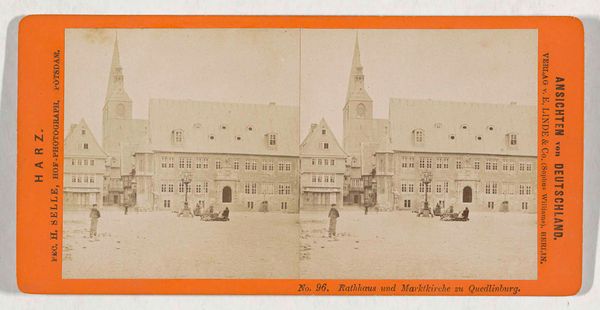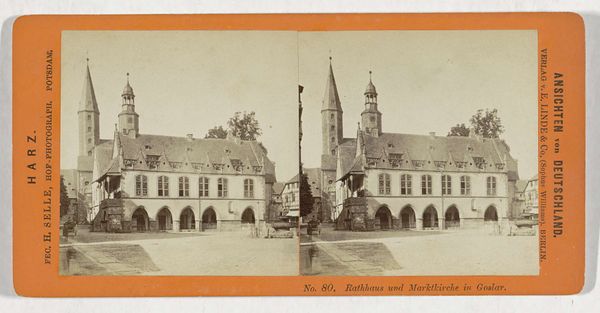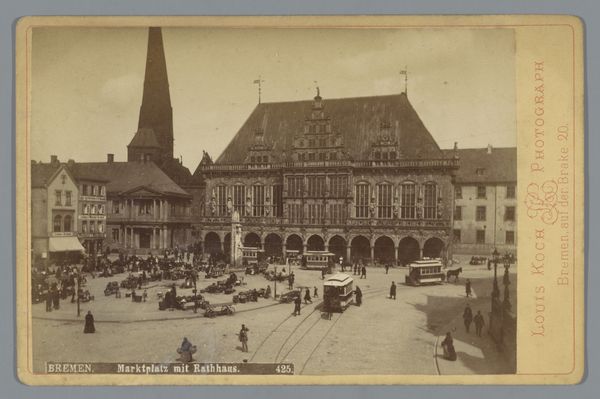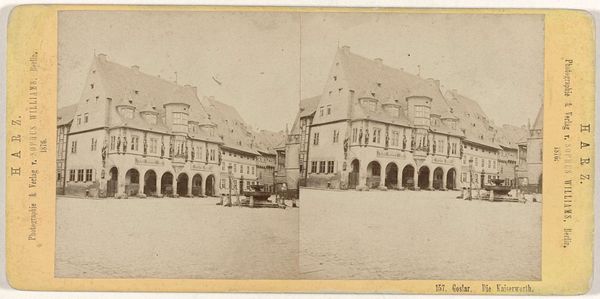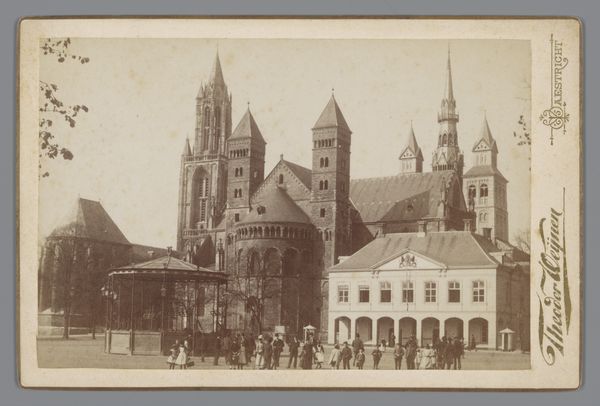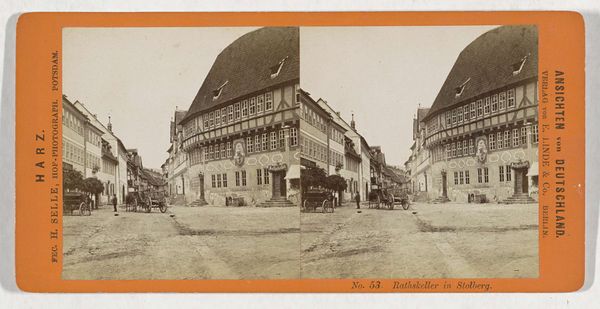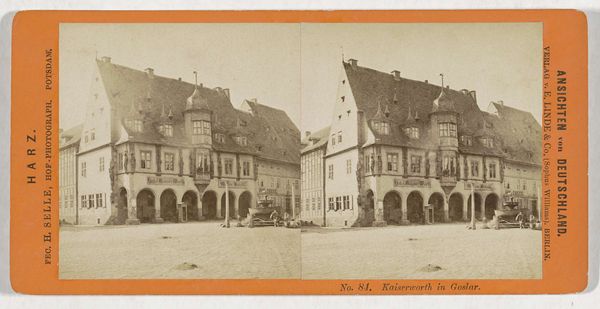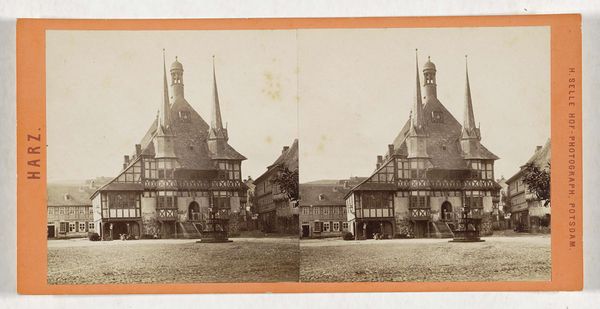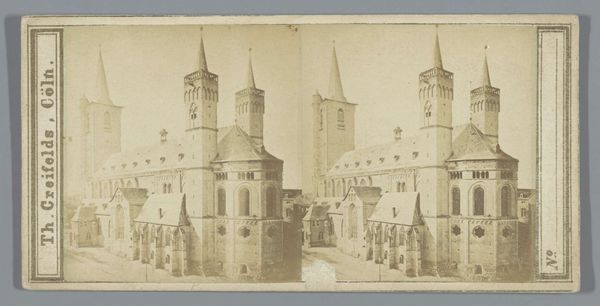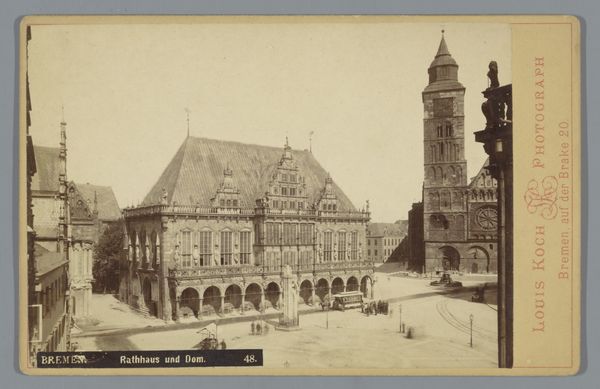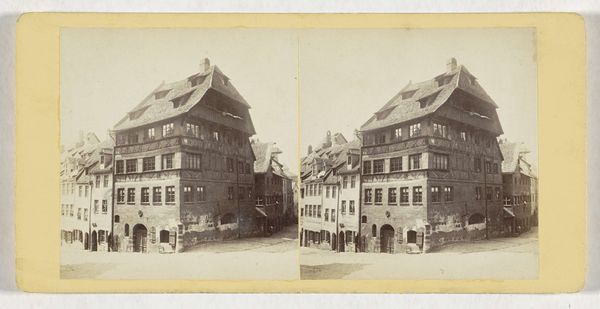
print, photography, albumen-print, architecture
# print
#
photography
#
coloured pencil
#
cityscape
#
albumen-print
#
architecture
Dimensions: height 86 mm, width 177 mm
Copyright: Rijks Museum: Open Domain
Curator: Here we have an albumen print from 1878 by Sophus Williams, titled "Stadhuis van Wroclaw, Polen"—that is, the Wroclaw Town Hall in Poland. What are your first impressions? Editor: Immediately, I'm struck by how static and staged it feels. The lighting is soft, almost blurring details, yet everything is so carefully composed. It evokes a sense of quietude, but also perhaps a sense of being controlled or constructed. Curator: That sense of control is interesting, particularly in the context of 19th-century photography. Photography at the time, while seemingly objective, was very much influenced by the prevailing social and political climates. The inclusion of horse-drawn carriages and what seem to be city dwellers adds to that controlled realism. This building as the city hall served as a stage for governing social practice and order. Editor: Precisely. The architecture itself speaks to power – those soaring spires, the intricate detailing, it’s a visual language of authority. And photographing the town hall and offering such prints plays a specific role: visualizing state power in an era when mass politics starts mobilizing populations across different geographical boundaries. It’s an attempt to define and preserve what’s deemed important. Curator: Absolutely. And, as a stereoscopic image, it presents a doubled view, potentially suggesting objectivity or completion, yet also highlighting the constructed nature of seeing. Its production as a commodity for consumption and distribution contributes to how people visualized both foreign lands and local authority, reinforcing the values it embodies. Editor: Considering Wroclaw's complex history – its identity shifting between Polish, German, and Prussian control over the centuries – the photograph's perspective gains more meaning. Is the photographer, as a Berliner, highlighting the strength of German civic life or something else? The image isn't merely a neutral representation but a product deeply intertwined with questions of national identity and belonging. Curator: This piece certainly encourages reflection on the intertwined nature of architecture, photography, and sociopolitical messaging. It's fascinating to peel back those layers. Editor: Indeed. It invites us to consider whose stories are being told and whose are being silenced in these seemingly straightforward representations of the urban landscape.
Comments
No comments
Be the first to comment and join the conversation on the ultimate creative platform.
